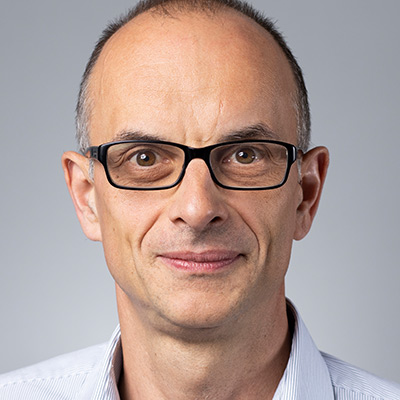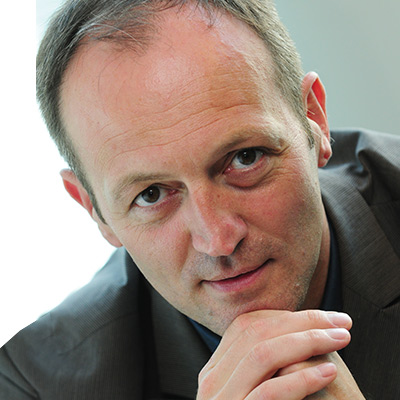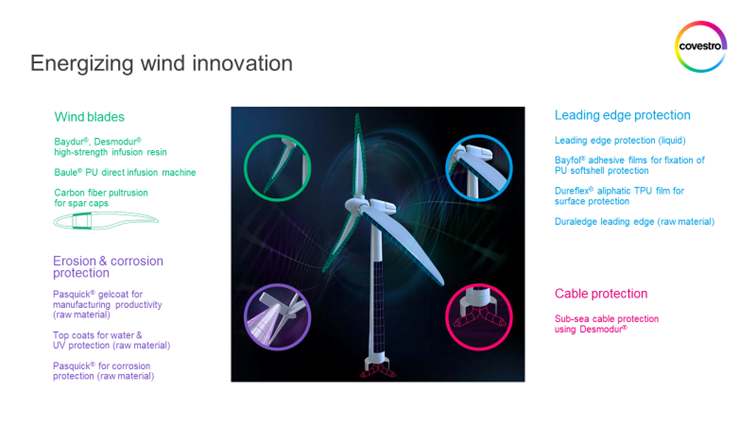Members' interviews
Interview with Covestro

26 February 2021
This month, we sat down with Dirk Soontjens and Thomas Baeker of Covestro to discuss their company’s role in supporting wind energy technology, the importance of the Circular Economy, and the European Green Deal. Mr. Soontjens is the External Representative for Covestro’s Polyurethanes Global Wind Segment and Mr. Baeker is Covestro’s Marketing Manager – Coatings, Adhesives and Specialties – Infrastructure.

Thomas Baeker

Dirk Soontjens
Can you tell our readers a little about your organisation? (general history in Europe, countries in which you are active, specific projects you are involved in, industry players you have worked with, etc.)
With 2020 sales of €10.7bn, Covestro is among the world’s largest polymer companies. Business activities are focused on the manufacture of high-tech polymer materials and the development of innovative solutions for products used in many areas. Covestro has 30 production sites worldwide and employs approximately 17,200 people (calculated as full-time equivalents) at the end of 2019. Covestro develops sustainable solution to the greatest challenges of our time: climate change, resource depletion, urban expansion, and population growth. In response to these challenges, and in order to make the world fully sustainable, Covestro is focusing its efforts on the Circular Economy.
For the wind industry in particular, the company is striving for more cost-effective material solutions to support a further expansion of wind energy and leverages its global wind expertise for this purpose. In Europe, it holds know-how for the wind industry at its laboratories in Germany and in France. Materials like PU infusion resin systems and protective coatings can help the wind energy sector thrive by enabling reduced production costs, maximal longevity, and durable protection. With these materials, we’re pushing boundaries in wind energy technology to increase profitability and performance and inspire constant innovation to keep developing wind energy solutions that are both sustainable and cost-efficient. Partnering with customers across the wind energy value chain, we offer materials that can inspire not only innovations in wind turbine design but also help maximise efficiency for wind farms on a larger scale.
Some examples of novel polyurethane-based wind technologies include:
- Infusion resin systems enabling wind turbines with longer, stiffer, and lighter wind blades;
- Coating technology enabling lasting corrosion protection for towers and leading-edge protection for wind turbine blades;
- Adhesive films enabling fixation of polyurethane soft shells for reduced maintenance and increased efficiency for leading edge protection for wind turbines; and
- Elastomers for cable protection for wind turbines, ensuring maximal longevity and minimal maintenance.
Besides material developments, Covestro’s support of the Circular Economy also includes more energy-efficient production at its sites and its own energy supply from external wind power plants. For this purpose, the company has recently signed a Power Purchase Agreement with an energy supplier for green electricity sourced from an offshore wind park, to German production sites. The company plans to sign more contracts with green energy suppliers in the future.
What are the most exciting developments you have seen in the wind industry?
The most exciting development in the wind industry from our point of view is the European Commission’s European Green Deal with its overarching target of making Europe climate-neutral by 2050. For this purpose, authorities should be motivated to install many more wind parks. Offshore wind offers even more room for growth, with its vast potential across Europe’s sea basins and a global leadership position of EU companies in this sector, plus new technical developments, enabling installations in deeper waters with floating platforms.
What changes would you like to see in the wind industry?
The major challenge is further cost reduction for wind energy. It is extremely important for a further global expansion of wind energy that the expenses for building-up new wind power plants and the levelised cost of energy (LCoE) be reduced. This in particular applies to offshore plants, where the challenge is the biggest. In order to meet these requirements, Covestro continues to develop innovative and cost-efficient material solutions for the wind power industry.
Going forward, what role do you see your organisation playing in the future development of wind energy
We are primarily focusing on novel materials that enable longer rotor blades with higher energy output. Further developments are aimed at an extended lifetime of wind turbine parts, reduced efforts for maintenance and repair, and at sustainable solutions for the decommissioning of turbines after use.
Besides these developments, Covestro seeks to continue its collaborative approach with partners up and down the supply chain to make wind energy a sustainable business in Europe and beyond.
How has WindEurope membership benefited your organisation?
WindEurope comprises a network of approx. 400 industry players from more than 35 countries, which are all passionate about making this industry even more successful. Experts of the association draft recommendations in collaboration with the industry and have direct access to the authorities that design the EU Regulatory Framework. In turn, WindEurope translates government policy (of the European Commission and at the national level) into tangible deliverables for the entire industry.
If we look ten years ahead, what do you hope to have achieved?
First and foremost, we hope that wind energy will by then be accepted as one of the strategic pillars to support economic growth in Europe, not just by industrial players, but also by the general public. Wind is a natural resource that we collectively have access to. The ultimate cost of wind energy can also be a competitive advantage, as it will, in its turn, challenge the entire energy market to remain competitive and sustainable.
We think that we should export strategic wind expertise from Europe to the rest of the world. Wind energy is an area where our research and development capabilities will continue to move our limits through innovation. And finally, the Circular Economy will then be in full swing in the industry. The wind energy market may even serve as a reference for other industrial applications.



